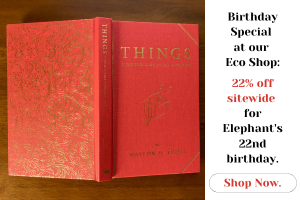View this post on Instagram
I was born and raised in Maryland, growing up spending most summers by the water.
There is so much to do here, and the warmer seasons offer endless possibilities to disconnect from our phones and reconnect with nature.
I moved to Love Point on Kent Island in February 2012 so I could be where I have always wanted to be—by the water. My family and I craved a little more peace and serenity, and the stress of living near the city had started to get to us.
Our first day on the beach in Queen Anne’s County was at Terrapin Nature Beach Park. I immediately fell in love. Once I started exploring all the beaches and parks of Kent Island, I started to realize that trash was a really big problem here. I found myself constantly complaining and getting so worked up and angry each time we visited the beach, which was obviously suffering from major neglect.
The signs were dated, fishing lines and hooks were being dumped, beer bottles and cans were everywhere, and there was no enforcement of any of the laws or rules.
This woke me up. I’d had enough and no longer wanted to whine about the issues—I wanted to do something about them.
That’s when my true passion evolved. That’s when the idea for Kent Island Beach Cleanups (KIBCU) started to take shape.
There’s been a lot of talk lately about “saving the earth“—and for good reason. Most of us cannot walk out of our homes or travel anywhere really without seeing garbage polluting our neighborhoods, streets, highways, parks, and beaches. From the plastic that lines the sides of our roadways and the bags and balloons stuck high up in trees, to water bottles scattered on the grass at our playgrounds and washing up on our beaches, to the cigarette butts that seem to be just about everywhere we turn, we have a serious problem. Thankfully, there are people who are working hard and spearheading efforts to combat this.
On the flip side, many people are unaware how widespread the pollution issue really is. They’re caught up in their day-to-day lives and find it tough to stop and smell the proverbial roses (or trash, as the case may be) because we live in such a fast-paced society—always running from one place to another, taking care of our families, and adhering to our never-ending schedules.
It’s easy to miss the trash if we aren’t “looking” for it, and the problem is compounded when some of us don’t even know what to look for. However, the topic of trash and pollution, and how to change the course we are on, is gaining steam due to the many states, counties, and municipalities imposing a variety of bans on single-use plastics like straws, shopping bags, and foam (polystyrene) food containers.
Pollution is not a new problem and generally stems from a lack of awareness and environmental education in the best cases, and complete lack of respect for the planet at the other end of the spectrum. I would like to think that most people want their communities litter and debris-free, but it is difficult to not get discouraged when we see so much trash in our environment. We all need to make a conscious effort to turn the tide on pollution now, or we may very well find ourselves in a horrible situation in the near-future.
With the recent EPS (Expanded Polystyrene) Foam ban in Maryland, we have watched people in our communities and our government officials taking sides. Those who are against the ban believe that this new law won’t protect our environment or do anything to curb the massive amounts of Styrofoam in our bay. They also state that foam is recyclable, and that any foam ban would negatively impact Maryland businesses, in turn creating financial hardships. If these folks spent just a small amount of time researching foam they would quickly learn the truth about EPS foam food products—which cannot be (easily or fully) recycled.
On the other side of the aisle, those who support the ban believe that by eliminating the use and sale of polystyrene, we can help cut down on its shockingly abundant presence on land and in our waterways, which will improve our environment. Supporters know that EPS foam is actually a plastic, and plastics are a petrochemical, made from petroleum. Petroleum is not sustainable and is a known toxic substance. The chemicals in the foam can leach into food (especially when it is hot), and can cause serious health problems, including cancer, neurological issues, headaches, fatigue, and more. To go a step further upstream, foam has been proven harmful to those who manufacture it.
On the front lines of the trash defense are neighborhood cleanup groups that see firsthand the impact of this type of debris. Foam is light and easily crumbles into smaller and smaller pieces called mirco-styryne. Once it has been broken down in this way, it is nearly impossible to collect. Sadly, once in this state, the product is in our waterways and oceans forever, and marine life typically mistakes the particles for food, which can lead to death. Other times, the particles ultimately come back to human ingestion via the food chain.
View this post on Instagram
I established Kent Island Beach Cleanups—a 501 (c)(3) nonprofit organization—back in 2012 because I could see a problem that others had overlooked. I’ve spent the past seven years helping to clean our beaches, roads, and parks (with my faithful volunteers), and picking up trash—including a significant amount of Styrofoam.
I’ve seen firsthand the negative impact this type of debris has on our environment, and how tedious it can be to collect. I have worked tirelessly trying to engage and persuade community members and government officials to join our cleanups to see for themselves the magnitude of the mess we are in. Those who have accepted my invitation to a cleanup end up realizing the shocking problems that we face. I have had countless first-time volunteers express disbelief as to the magnitude of trash in our waterways.
The good news is that most of the items we collect can be reused or at least recycled (plastic bottles, ridged plastic pieces that used to be something bigger but have broken down in the elements, glass bottles, and beverage cans). We just have to do it! However, among the items we collect that cannot be easily recycled are cigarette butts, plastic bags and film, monofilament fishing lines, and EPS foam. Just this past March, 206 volunteers came out to our beach cleanup at Terrapin Beach Park where we collected and sorted through more than 12 (16-gallon) bins of both plastics and EPS foam less than two hours into our event.
The real issue is that not all litter is created equal—the implications on our environment are various and endless. When elected officials who oppose the foam ban talk about the idea that polystyrene can be recycled, they are greatly missing all of the nuances that go into it: the collection, foam’s place in our market, and how costly and complex the process is to everyone.
The current United States recycling market has dropped in recent years. In 2018, China—the world’s largest importer of plastics—stopped accepting most recyclables. Rebecca Beitsch, of The Washington Post, wrote this past January, “In making the changes, China’s Ministry of Ecology and Environment cited environmental damage caused by dirty wastes or even hazardous wastes mixed in with solid waste that can be recycled into raw materials.”
The amount of time it takes to pay workers to sort through contaminated recyclables it too costly, and ultimately can degrade the original material. And many facilities do not accept certain types of foam and other recyclables. Workers spend hours trying to remove plastic bags from recyclables, and those bags clog up the machines, thus resulting in having to shut down the line.
I personally called over six foam “recycling” facilities in Maryland recently. I spent a substantial amount of time researching each of the facility websites and cross-checking that information with the representatives over the phone. The information that I was given on the phone differed greatly from what was listed on their website.
When people arrive in person at these facilities, they are often told different information from what is presented on the website or over the phone, which is confusing and frustrating. All but one facility stated they took foam packaging peanuts. Others said they would not accept dirty food containers, and two stated they wouldn’t take foam that had any glue, tape, or stickers on them. To complicate matters, users must take the foam to these facilities themselves, and usually find out that their efforts were for naught because most of their items would not be accepted. It is easy to understand why so many avoid the process all together.
There are no facilities here on the Eastern Shore, and in May of this year, a Dart Foam facility in Baltimore City closed due to not having a market to recycle the product. Does anyone really think that people are going to go through all of this just to recycle their foam? The safe money bet is: (obviously) no.
So, where does this leave us? Most of our trash and recyclables these days gets burned, buried, or just simply thrown “away.” We are at a point where the waste is excessive and it is literally killing our planet. Most of the items we throw away never really go away—they just leave our homes so we forget about them. Foam and plastic, in most cases, are used for no more than a few minutes, then discarded because these products were created with the intention of the consumer only using them one time.
To the dismay of many environmentalists, money talks. Polystyrene is 95 percent air, so it is not cost-effective to store or ship, and recycling uses energy for transporting and processing. Many foam supporters feel that there is no point in recycling if you end up using more than you save. However, recycling has its benefits and helps us pay more attention to and learn about the products we use each week. It helps families recognize what is sustainable and what isn’t, and what could be reused, or even better—completely avoided in the first place.
Our environment is in a vulnerable place, and we as citizens of this planet are at a pivotal point in our history. We need to ensure our children and our grandchildren will be able to live in a world that is both sustainable and free of fear from our necessities being scarce. Banning foam products is just one small step in the right direction. Thankfully, companies are finding ways to create alternative products that are eco-friendly and sustainable, and several of them are already on the market. If the foam manufacturers choose to adapt and create sustainable products, they will see an increase in jobs as the market continues to tilt toward alternative products.
I am asking you, please, before you take a stance on this subject, join a beach or roadside cleanup in your community and see the issues up close. Talk to those who spend their days or weekends picking up non-sustainable products and learn about the impact they have on our environment and our physical health. Look into the alternatives.
Talk to those who have dedicated their lives to fighting for what is right for our planet. Talk to your kids—because they know more than we give them credit for. Ask them, “What kind of world do you want us to leave behind?”
If we are not careful, pollution will overrun us, and stopping to smell the roses will quite possibly be a thing of the past.
The time for change is now.
~







Read 4 comments and reply